Design and Experiments of the Data Acquisition System for Bale Rolling Characteristic Parameters on a Large-Scale Round Bale Machine
Abstract
:1. Introduction
2. Materials and Methods
2.1. The Construction of the Round Bale Machine Test Bench and the Analysis of the Bale Rolling Process
2.1.1. Construction of the Round Bale Machine Test Bench and Working Principle of Bale Rolling
2.1.2. Analysis of the Bale Rolling Process in the Round Bale Machine
2.2. Design of the Hardware System
2.2.1. Hardware System Design for Bale Radial Tensioning
2.2.2. Hardware System Design for the Round Baler Torque
2.2.3. Design of the Overall Hardware System
2.3. Design of the Software System
2.3.1. Bale Radial Tension Acquisition Program Design
2.3.2. Program Design for Torque, Rotation Speed and Power Consumption of Round Baler Motor
2.3.3. Program Design for Rotation Speed
2.3.4. The Data Acquisition System of Bale Rolling Characteristic Parameters of the Large-Scale Round Bale Machine
2.4. Validation Test
3. Results and Analysis
3.1. Analysis of the Bale Rolling Characteristic Parameters
3.2. Discussion
4. Conclusions
- (1)
- This paper designed a set of highly integrated and flexible data collecting systems for the large-type round bale machines’ bale rolling performance metrics, based on the LabVIEW 2020 software platform. In the course of bale rolling, they can record and show real-time statistics on power consumption, rotation speed, motor torque, and bale radial tension.
- (2)
- The test demonstrated that the radial tension of the bale was minor and remained nearly constant, the round bale machine’s torque need was minimal, and the bale chamber was mostly filled with loose sunflower straw during the grass core-creation stage. The radial tension of the straw bale and the motor torque of the round bale machine both had a slow, increasing trend throughout the grass-filling stage, indicating that the sunflower straw had now been filled to the brim with the fully rolled bale chamber. The motor torque and bale radial tension exhibit a roughly linear trend of rapid growth as the sunflower straw keeps moving into the rolling bale chamber. The round bale machine was in the compression stage of rolling bales. This demonstrates the dependability of the data collecting system and correlates with how the round bale machine actually operates.
- (3)
- The data acquisition system recorded the power consumption of the round bale machine during the test bench empty run and core construction stage. The energy consumption comparison analysis produced a relative error of 5.8% in this measurement. Throughout the bale rolling and compression cycle, the data gathering system recorded a 9.5% relative inaccuracy in the power usage of the round bale machine. The round bale machine test bed’s data collecting system is reliable and efficient, as evidenced by the accuracy of the machine’s power consumption measurement, which ranged from 90.5% to 94.2%.
Author Contributions
Funding
Data Availability Statement
Acknowledgments
Conflicts of Interest
Appendix A
| Project | Parameter | Value |
|---|---|---|
| Baling room | Baling room diameter/m | 1.2 |
| Width of baling room/m | 1.5 | |
| Number of steel rollers | 14 | |
| Pressure range of the unloading cylinder/MPa | 0~16 | |
| Conveyor device | Working length/m | 6 |
| Effective working width/m | 1.5 | |
| Motor | Rated power of the electric motor of the round bale machine/kW | 13 |
| Rated power of conveyor motor/kW | 4 |
References
- Lemos, S.; Denadai, M.; Guerra, S.P.S.O.; Esperancini, M.S.T.; Bueno, O.D.C.; Takitane, I.C. Economic efficiency of two baling systems for sugarcane straw. Ind. Crops Prod. 2014, 55, 97–101. [Google Scholar] [CrossRef]
- Wang, Q.Q.; Jiang, Y.C.; Li, L.H.; Qin, J.W.; Chen, L.Q. Performance analysis of a spring-tooth drum pickup of straw baler via coupling simulation. Int. J. Agric. Biol. Eng. 2021, 14, 159–165. [Google Scholar] [CrossRef]
- Borowski, S.; Kaszkowiak, J.; Dulcet, E. How to Harvest Haylage Bales in Sustainable Agriculture. Appl. Sci. 2021, 11, 11508. [Google Scholar] [CrossRef]
- Pari, L.; Suardi, A.; Santangelo, E.; García-Galindo, D.; Scarfone, A.; Alfano, V. Current and innovative technologies for pruning harvesting: A review. Biomass Bioenergy 2017, 107, 398–410. [Google Scholar] [CrossRef]
- Liang, J.M. The Design of Side Bundle Pick Up the Loading Car and Optimization of Fixed Gripping Arm Picking of the Mechanism. Master’s Thesis, Inner Mongolia Agricultural University, Hohhot, China, 2017. [Google Scholar]
- Wang, Z. Design and Test of the Rubbing Type Baling Device for Residual Film. Master’s Thesis, Shihezi University, Shihezi, China, 2021. [Google Scholar]
- Igathinathane, C.; Archer, D.; Gustafson, C.; Schmer, M.; Hendrickson, J.; Kronberg, S.; Keshwani, D.; Backer, L.; Hellevang, K.; Faller, T. Biomass round bales infield aggregation logistics scenarios. Biomass Bioenergy 2014, 66, 12–26. [Google Scholar] [CrossRef]
- Kowalik, I.; Zawieja, B.; Rybacki, P.; Krzyżaniak, K. Evaluation of the Quality and Possible Use of a New Generation of Agricultural Nets for Packing Bulk Materials in Terms of the Aspect of Reducing the Environmental Burden. Agriculture 2023, 13, 367. [Google Scholar] [CrossRef]
- Lei, J.L. Analysis of Baling Process and Experimental Study of Steel-Rool Round Baler. Doctor’s Thesis, Inner Mongolia Agricultural University, Hohhot, China, 2015. [Google Scholar]
- Fasick, G.T.; Liu, J. Lab scale studies of miscanthus mechanical conditioning and bale compression. Biosyst. Eng. 2020, 200, 366–376. [Google Scholar] [CrossRef]
- Liu, H.Y.; Gao, N.; Meng, Z.J.; Zhang, A.Q.; Wen, C.K.; Li, H.Q.; Zhang, J. Construction and Test of Baler Feed Rate Detection Model Based on Power Monitoring. Agronomy 2023, 13, 425. [Google Scholar] [CrossRef]
- Mirko, M.; Luisa, M.; Nicolo, R.; Giovanni, M. Analysis of the parameters affecting the mechanical behaviour of straw bales under compression. Biosyst. Eng. 2017, 160, 179–193. [Google Scholar]
- Zawada, M.; Nijak, M.; Mac, J.; Szczepaniak, J.; Legutko, S.; Gościańska-Łowińska, J.; Szymczyk, S.; Kaźmierczak, M.; Zwierzyński, M.; Wojciechowski, J.; et al. Control and Measurement Systems Supporting the Production of Haylage in Baler-Wrapper Machines. Sensors 2023, 23, 2992. [Google Scholar] [CrossRef]
- Xie, W.; Li, X.; Fang, Z.C.; Quan, W.; Luo, H.F.; Wu, M.L. Design of compound machine for rice straw collecting and continuous baling. Trans. Chin. Soc. Agric. Eng. 2019, 35, 19–25. [Google Scholar]
- Xiao, Z.; Liu, L.D.; Wang, G.H.; Gao, D.M.; Bai, Y.; Wang, D.C. Control system design of silage round baler based on PLC. J. China Agric. Univ. 2013, 18, 175–179. [Google Scholar]
- Zhao, Z.; Huang, H.D.; Yin, J.J.; Yang, S.X. Dynamic analysis and reliability design of round baler feeding device for rice straw harvest. Biosyst. Eng. 2018, 174, 10–19. [Google Scholar] [CrossRef]
- Fang, J.J.; Li, H.J.; Wang, J.; Yang, M.S.; Zong, Z.Y.; Zhang, Y. Compression and stress relaxation characteristics of alfalfa during rotary compression. BioResources 2019, 14, 3860–3872. [Google Scholar] [CrossRef]
- Yin, J.J.; Chen, Z.J.; Liu, C.; Zhou, M.L.; Liu, L. Design and Experiments of a Real-Time Bale Density Monitoring System Based on Dynamic Weighing. Sensors 2023, 23, 1778. [Google Scholar] [CrossRef]
- Loftis, P.J.; Kirk, K.R.; Mueller, J.D.; Andrae, J.G. Development of a round bale weighing system for spring-loaded bale ramps. Appl. Eng. Agric. 2019, 35, 969–977. [Google Scholar] [CrossRef]
- Shang, Y.H.; Meng, Z.J.; Cong, Y.; Dong, J.J.; Luo, C.H.; Song, Z.H. Development of a control system with remote monitoring function for round baler. Comput. Electron. Agric. 2021, 182, 106044. [Google Scholar] [CrossRef]
- Cao, Z.F. Experimental Study on the Working Parameters of Round Baler for Corn Stalk. Master’s Thesis, Jilin Agricultural University, Changchun, China, 2017. [Google Scholar]
- Lei, J.L.; Wang, D.F.; Li, D.H.; Zhang, Q.C.; Yang, X.; Na, M.J. Influence Factors Analysis and Optimization of Forming Rotary Straw Core by Steel-roll Round Baler. Trans. Chin. Soc. Agric. Mach. 2015, 46, 18–25. [Google Scholar]
- Li, Y.L.; Wang, D.F.; Lei, J.L. Baling Analysis of the Steel-roll Round Baler based on Multi-field Coupling Theory. J. Shenyang Agric. Univ. 2019, 50, 429–437. [Google Scholar]
- Li, Y.L.; Wang, D.F.; Li, D.H.; Wang, M.; Jiang, Z.G.; Lei, J.L. Theoretical Analysis and Experiment of Baling Mechanism of Roll-disk Round Baler. Trans. Chin. Soc. Agric. Mach. 2016, 47, 45–52. [Google Scholar]
- Wang, J.Y.; Li, X.Y.; Huang, W.; Wu, L.; Cui, J.; Bai, H.B.; Zeng, F.D. Mathematical model for bale-density prediction in large steel roller-type round balers during bale rolling. Bioresour. Technol. 2024, 396, 130445. [Google Scholar] [CrossRef] [PubMed]
- Huang, W. Experimental Study on Power Consumption of Large Steel Roller Round Baler during Baling Process. Master’s Thesis, Inner Mongolia Agricultural University, Hohhot, China, 2023. [Google Scholar]
- Wu, L. Design and Test of Force Field Data Acquisition System for Steel Roller Type Round Baler. Master’s Thesis, Inner Mongolia Agricultural University, Hohhot, China, 2022. [Google Scholar]
- Fang, J.J. Study on Rotary Compression Characteristice of Alfalfa and System Integration of Baling Process Monitoring and Controlling. Doctor’s Thesis, Inner Mongolia Agricultural University, Hohhot, China, 2020. [Google Scholar]


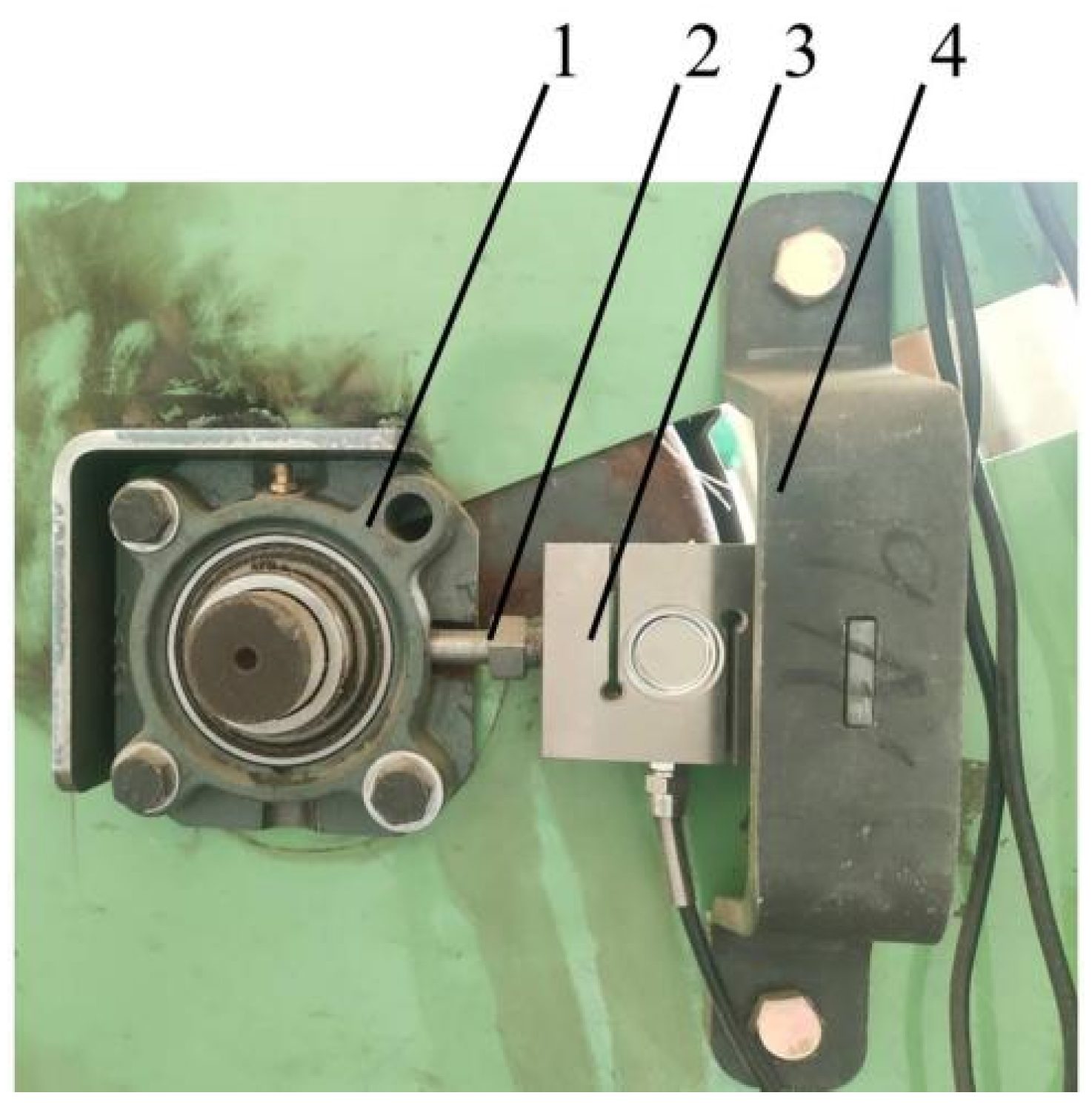
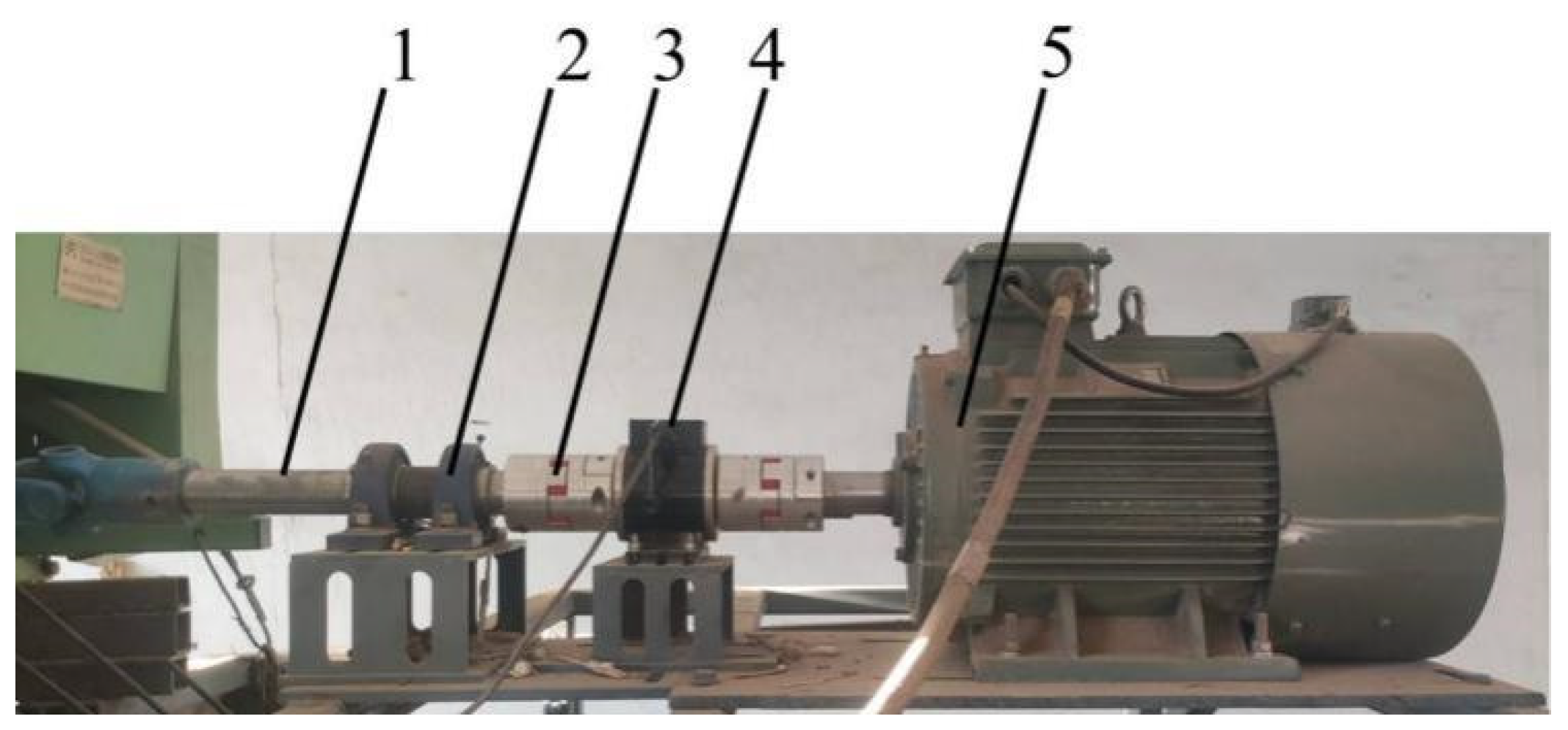

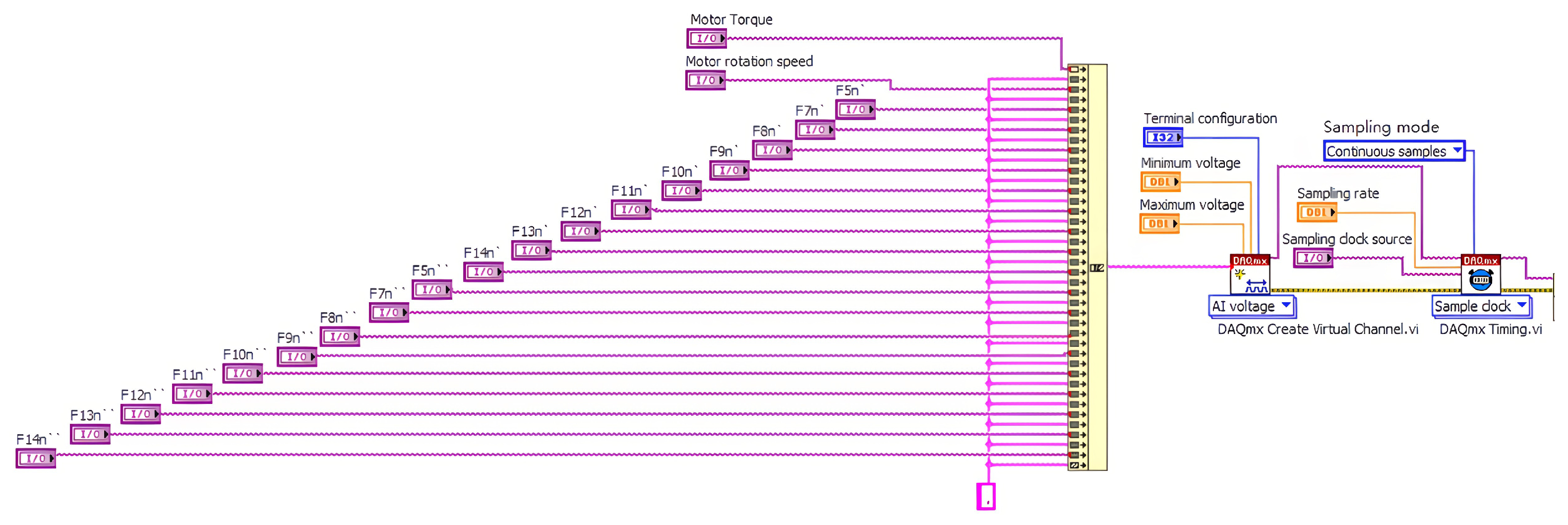



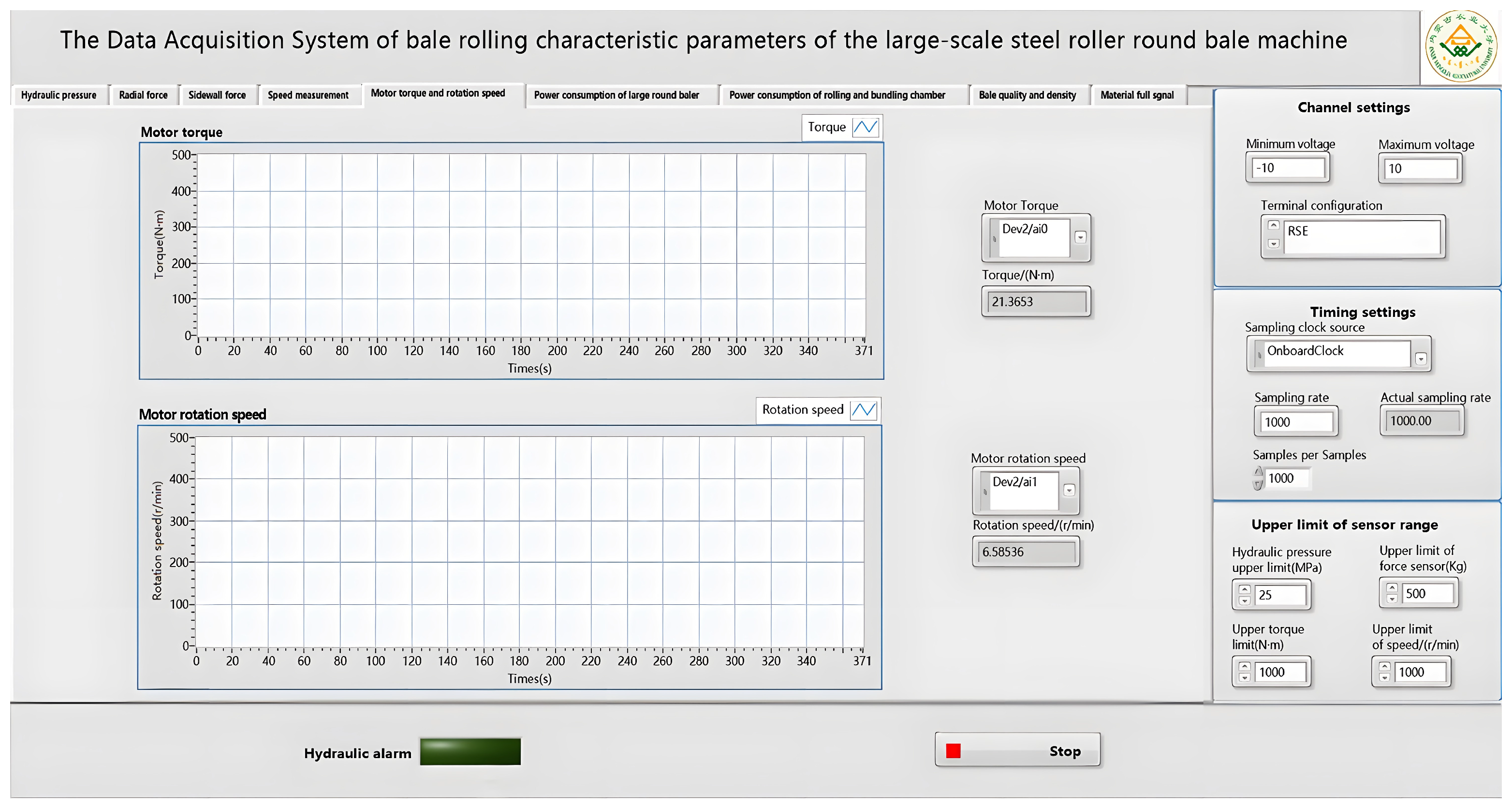

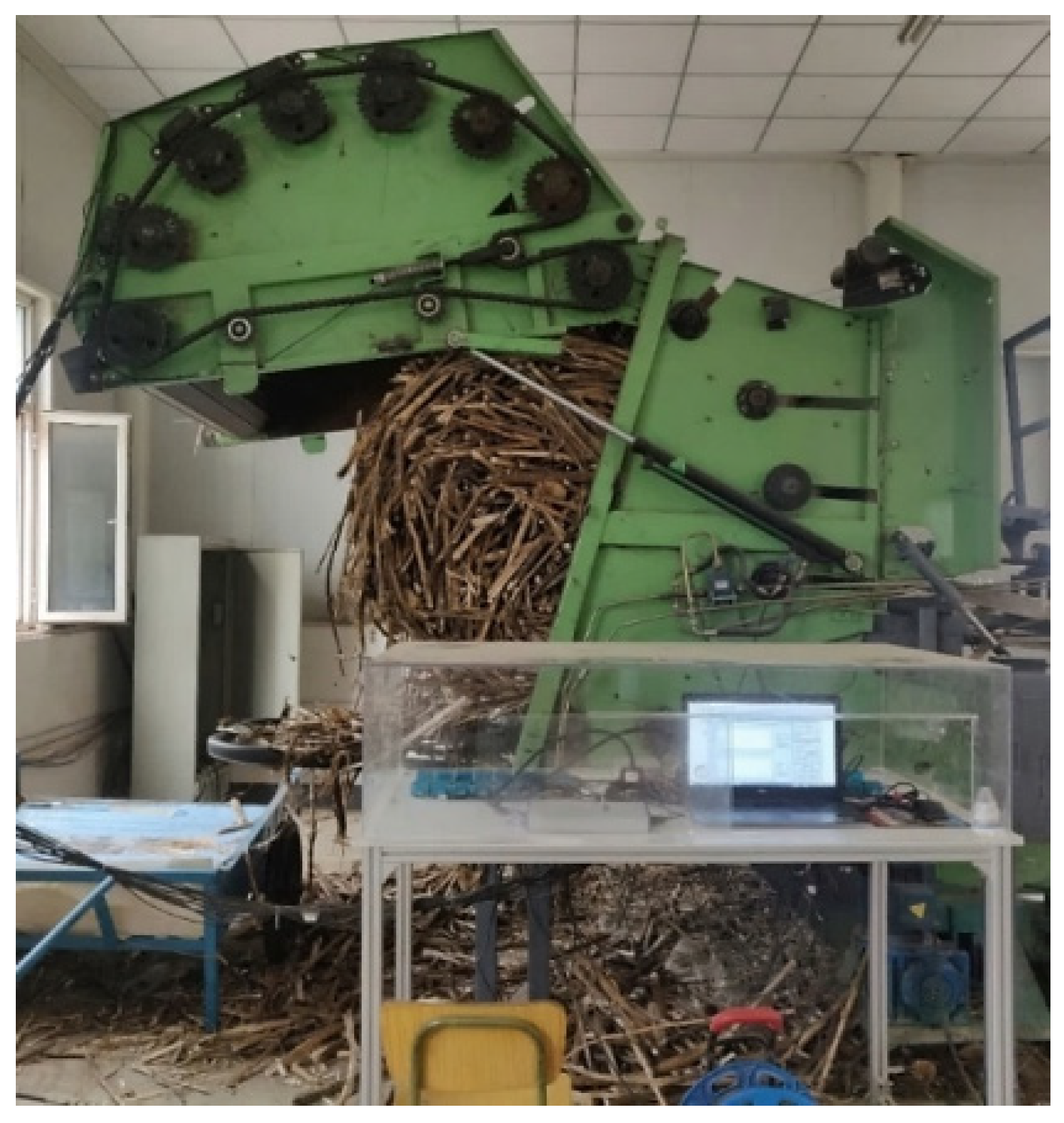

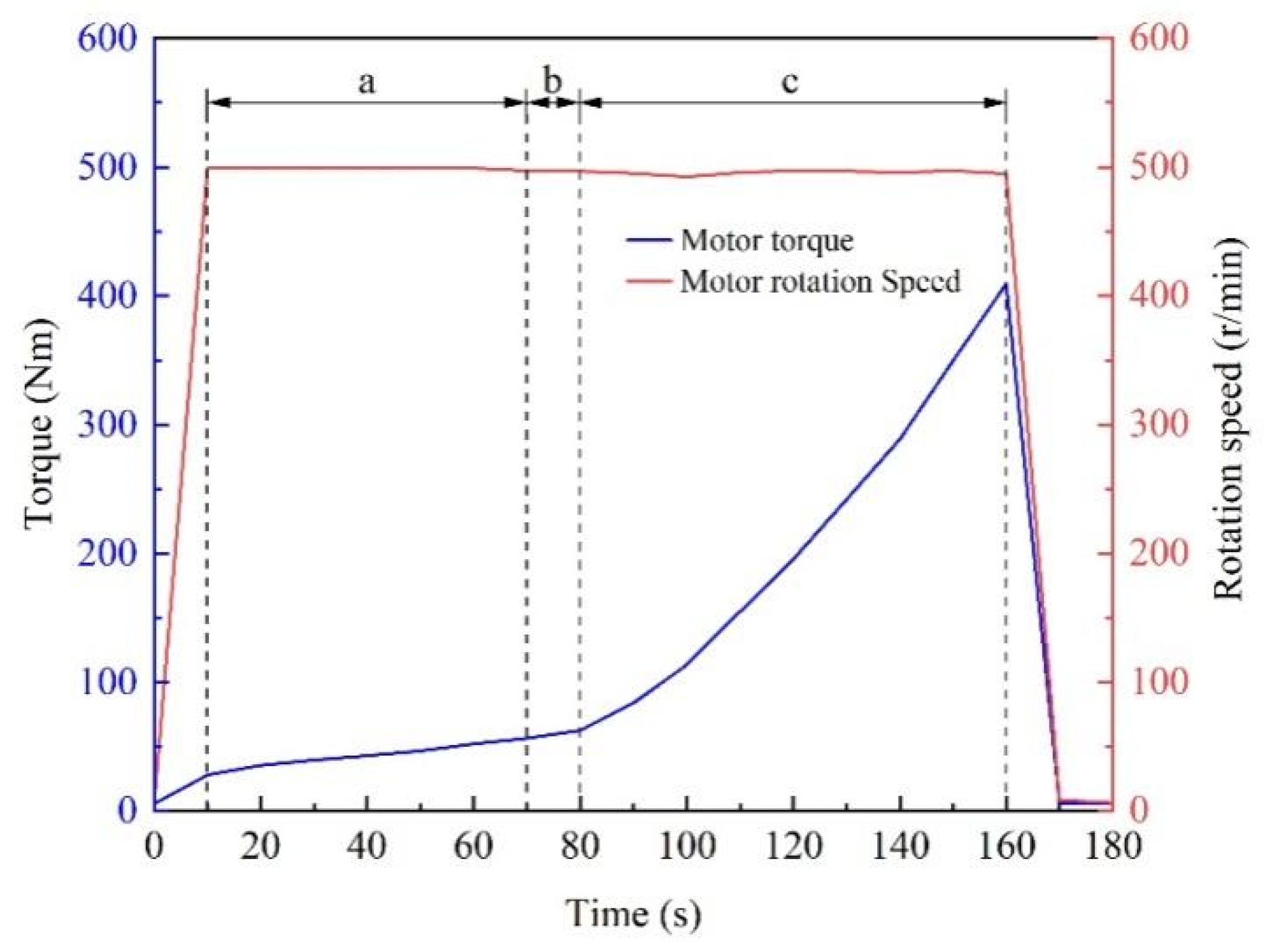

Disclaimer/Publisher’s Note: The statements, opinions and data contained in all publications are solely those of the individual author(s) and contributor(s) and not of MDPI and/or the editor(s). MDPI and/or the editor(s) disclaim responsibility for any injury to people or property resulting from any ideas, methods, instructions or products referred to in the content. |
© 2024 by the authors. Licensee MDPI, Basel, Switzerland. This article is an open access article distributed under the terms and conditions of the Creative Commons Attribution (CC BY) license (https://creativecommons.org/licenses/by/4.0/).
Share and Cite
Wang, J.; Zeng, F.; Cui, J.; Bai, H.; Li, X.; Zhao, Z. Design and Experiments of the Data Acquisition System for Bale Rolling Characteristic Parameters on a Large-Scale Round Bale Machine. Processes 2024, 12, 1042. https://doi.org/10.3390/pr12061042
Wang J, Zeng F, Cui J, Bai H, Li X, Zhao Z. Design and Experiments of the Data Acquisition System for Bale Rolling Characteristic Parameters on a Large-Scale Round Bale Machine. Processes. 2024; 12(6):1042. https://doi.org/10.3390/pr12061042
Chicago/Turabian StyleWang, Junyue, Fandi Zeng, Ji Cui, Hongbin Bai, Xuying Li, and Zhihuan Zhao. 2024. "Design and Experiments of the Data Acquisition System for Bale Rolling Characteristic Parameters on a Large-Scale Round Bale Machine" Processes 12, no. 6: 1042. https://doi.org/10.3390/pr12061042





